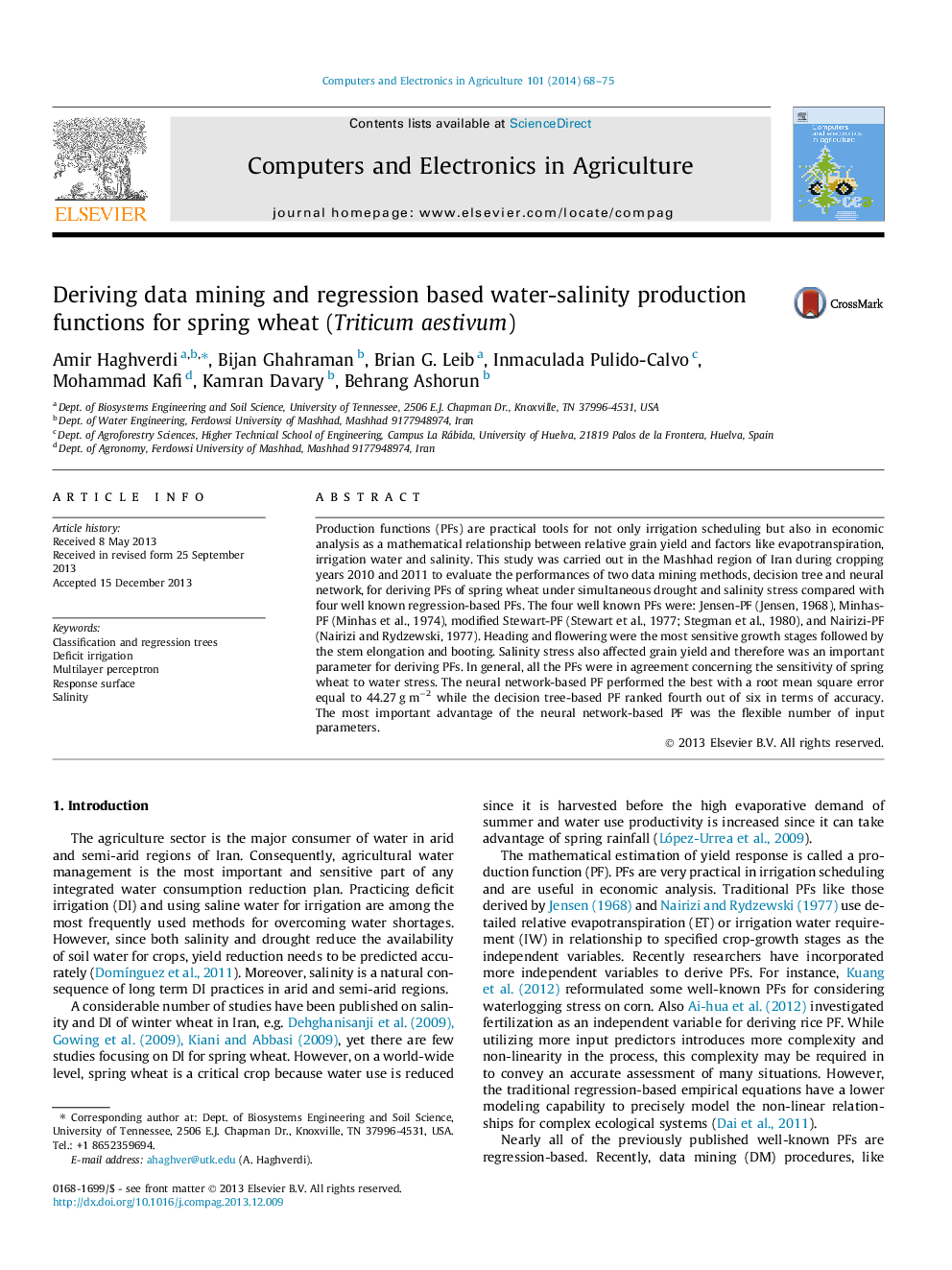| Article ID | Journal | Published Year | Pages | File Type |
|---|---|---|---|---|
| 84459 | Computers and Electronics in Agriculture | 2014 | 8 Pages |
•A new type of water production function, data mining-based, was introduced for predicting spring wheat yield.•The concurrent effect of deficit irrigation and salinity was considered on the yield reduction.•Four well-known regression-based water production function were calibrated and tested.•The neural network-based water production function worked better than the other functions.•The irrigation water salinity was a useful input predictor.
Production functions (PFs) are practical tools for not only irrigation scheduling but also in economic analysis as a mathematical relationship between relative grain yield and factors like evapotranspiration, irrigation water and salinity. This study was carried out in the Mashhad region of Iran during cropping years 2010 and 2011 to evaluate the performances of two data mining methods, decision tree and neural network, for deriving PFs of spring wheat under simultaneous drought and salinity stress compared with four well known regression-based PFs. The four well known PFs were: Jensen-PF (Jensen, 1968), Minhas-PF (Minhas et al., 1974), modified Stewart-PF (Stewart et al., 1977; Stegman et al., 1980), and Nairizi-PF (Nairizi and Rydzewski, 1977). Heading and flowering were the most sensitive growth stages followed by the stem elongation and booting. Salinity stress also affected grain yield and therefore was an important parameter for deriving PFs. In general, all the PFs were in agreement concerning the sensitivity of spring wheat to water stress. The neural network-based PF performed the best with a root mean square error equal to 44.27 g m−2 while the decision tree-based PF ranked fourth out of six in terms of accuracy. The most important advantage of the neural network-based PF was the flexible number of input parameters.
